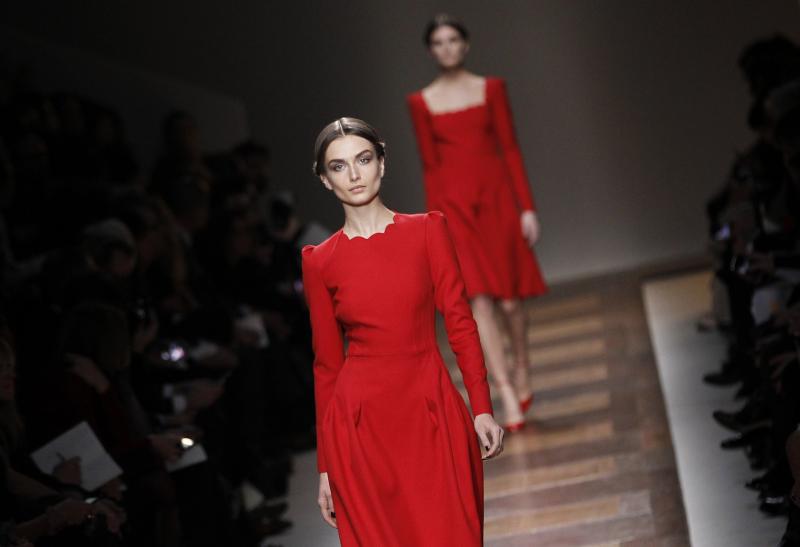Words by Pat Eggleton - In this photo: a blue dress by Roberto Cavalli
Now it’s time to look at adjectives.
Most Adjectives in Italian are placed after the nouns they describe.
Adjectives have to agree with the gender of the noun and if you have a plural noun, you must also make the adjective plural. This sounds daunting but after a while it becomes automatic.
Adjectives ending in – o change their ending to – a in the feminine form:
Un vestito rosso – una gonna rossa [ a red dress – a red skirt]Adjectives ending in –e do not change their ending for the feminine singular:
Un ragazzo intelligente – una ragazza intelligente [an intelligent girl – an intelligent boy]In the plural, masculine adjectives ending in – o change their ending to – i:
Un libro costoso – dei libri costosi [an expensive book – some expensive books]But most adjectives ending in –io drop the – o in the plural:
Un articolo serio – degli articoli seri [ a serious article – some serious articles]Feminine adjectives ending in – a change their ending to – e in the plural:
Una ragazza contenta - delle ragazze contente [a happy girl – some happy girls]Adjectives ending in – e change their ending to – i in both the masculine and feminine plural:
I ragazzi sono intelligenti [the boys are intelligent]
Le ragazze sono intelligenti [the girls are intelligent]If you are describing both masculine and feminine plural nouns in the same sentence you use the masculine form:
I nonni sono italiani [The grandparents are Italian]Some adjectives never change their form and these are usually marked “inv” [invariable] in the dictionary. Among the commonest are:
Blu [blue]
rosa [pink]
Now see if you can insert the correct form of the adjective [in brackets] in this exercise:
1. una signora [felice] ____________.
2. le scarpe [giallo] ____________.
3. un ragazzo [alto] ____________.
4. dei ragazzi [contento] ____________.
5. una bambina [carino] ____________.
6. Sei [stanco] ____________, Maria?
7. Giovanni ha i genitori [milanese] ____________.
8. dei vestiti [blu] ____________.
9. gli studenti sono [felice] ____________.
10. gli edifici [vecchio] ____________.
11. le mele [verde] ____________.
12. Gli abiti sono [nuovo] ____________.
As always, you will come across irregularities. There are some adjectives which need other spelling changes and some which are placed before the nouns they describe.
We’ll look at these in another lesson.









